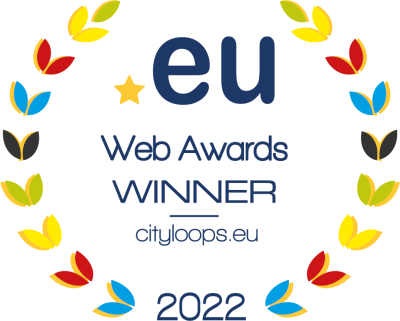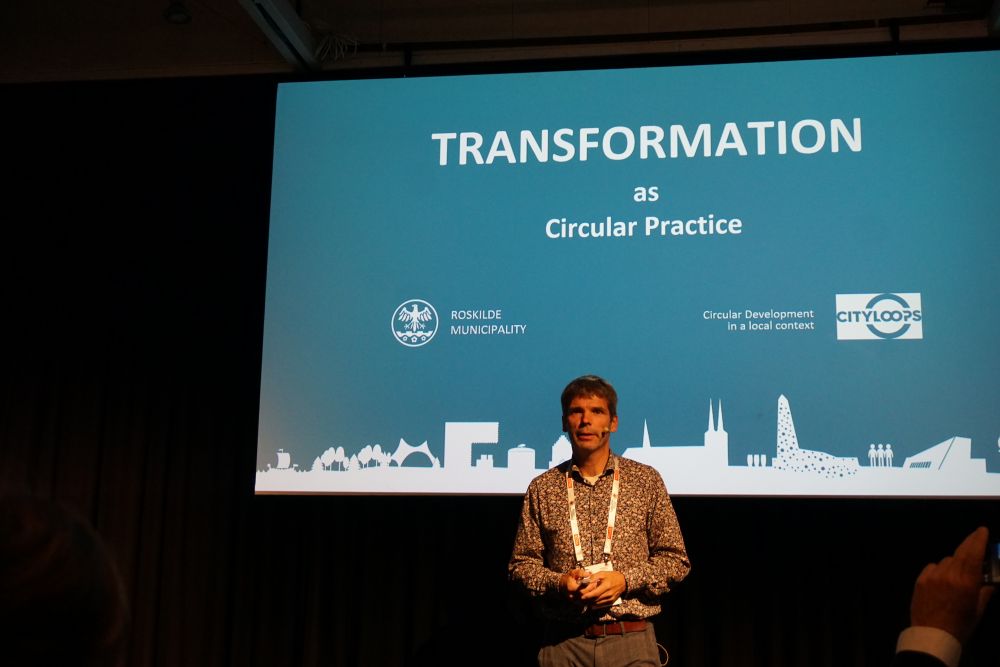News
The most sustainable buildings are the ones already standing
29 Aug 2023
In July, CityLoops was present at the World Congress of Architects in Copenhagen (Denmark). During the session “End of Life innovations: Unleashing the potential of construction materials through repurposing, reusing, and recycling” the project highlighted how we find new purposes for buildings through adaptive reuse and how we can effectively recycle and reuse materials and structures from existing buildings. CityLoops’ key message: the most sustainable buildings are the ones already standing!
At the Congress, CityLoops highlighted its work in the Danish cities of Roskilde and Høje Taastrup. The conversation, moderated by Pernille Kern Kernel, chief consultant in circular construction at the Capital Region of Denmark, highlighted how Høje-Taastrup worked with the market to repurpose its old city hall, how Roskilde is reusing old materials in new construction, and how we need to find new business models that don’t depend on new construction.
In 2016, the municipality of Høje-Taastrup decided it needs a new city hall and entered into a pre-purchase development agreement with private developer IKANO, imposing circular conditions in the tender to ensure that circular principles would be applied in the demolition of the old city hall. However, due to changing market conditions IKANO and the municpality are currently considering changing the project. They are are exploring if rather than demolishing the city hall, it can repurposed into housing. As Lone Lindberg Laursen, head of sustainability for IKANO Housing noted: “We hope and expect to do a full/partial transformation, but cannot guarantee due to cost, as transformation is more time consuming and full of risks that need to be taken into account. For now, the gap between selective demolition and market value of demolition materials is very big – and therefore the true value of used construction materials will be the ones kept in the building itself, avoiding expensive demolition processes."
To be able to implement such innovative solutions, municipalities need to be better at embedding circular processes, and think about how they can add value to the building construction. A material passport that identifies a materials quality, content, maintenance and (re)use potential, and gives identity to the building and all its separate materials, components and products, can contribute to this. Roskilde has found material passports a useful tool to neutralise risk when working on the circular construction projects in CityLoops. “In the municipality we are now screening all existing buildings for their reuse and transformation potential to make sure that we keep a high degree of their materials embedded in construction. Having such a deliberate process of transformation is the way forward” explained Klaus Kellerman, construction manager for Roskilde Municipality, adding that this approach helps save CO2 and resources by allowing to maintain as much as possible material on site.
Søren Nielsen, Architect MAA and partner at Vandkunsten, added to the discussion, emphasising that “working with reuse materials as an architect can bring you nice surprises. You end up with something that you could not have designed yourself and it makes the project special. You can change aesthetic culture.” He also notes that reused materials have environmental value. When talking about the business side of things, “the question should be why are new materials so cheap. The answer is that you are not asked to pay for environmental destruction. We should stop building new things entirely.”
CityLoops aimed to contribute to make the construction industry less dependent on new materials. In the project, six European medium-sized cities - Høje-Taastrup and Roskilde (Denmark), Mikkeli (Finland), Apeldoorn (the Netherlands), Bodø (Norway), and Seville (Spain) - piloted a series of circular economy actions with the aim of achieving material circularity. They now aim to share the results of their work widely and to enable cities across Europe (and beyond) to replicate and upscale their efforts and to contribute to the circular transition. To that end the project has developed a handbook on circular construction for local and regional governments. The handbook aims to provide cities with a comprehensive overview of how the lessons learnt and main insights from the project can be most effectively applied in their own contexts.
All news


